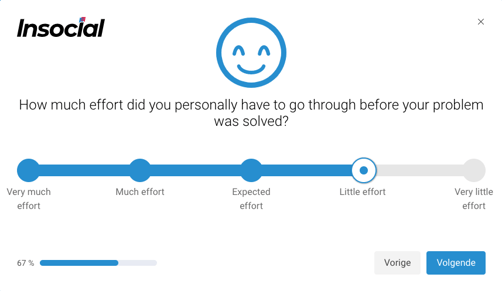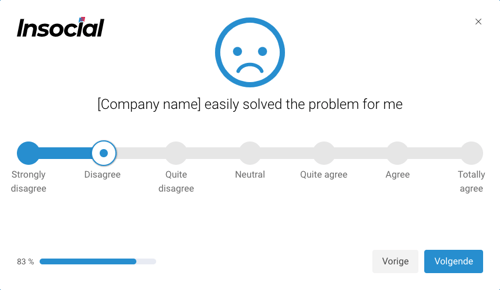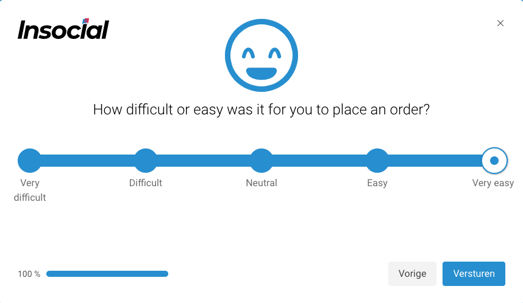Different Key Performance Indicators (KPI’s) can be used to measure customer satisfaction. Probably you already know a few, such as the Net Promoter Score (NPS) or the Customer Satisfaction Score (CSAT). In this article we will tell you more about the Customer Effort Score, or CES.
The Customer Effort Score (CES) indicates the extent to which the customer must make an effort to complete an action in relation to the benefits that come with this action. This can occur in various situations. For example, when the customer:
- Wants to get in touch with customer service
- Wants a problem solved by customer service
- Wants to order an item in a webshop
- Perform an online action to webshop
The time and effort that customers have to invest to arrange something themselves has a major impact on their satisfaction. The easier it is for the customers, the more positive they will be. The benefits that come with it also have an influence. A good example to explain this is switching from an older iPhone to a newer model. Because of the iCloud this is very easy, you don’t lose any data that was on your old device and you can enjoy the benefits of the new device.
If customers feel that they have to do a lot themselves, it is unlikely that these same customers will become loyal customers in the future. Thus, by lowering the effort of customers, you increase customer loyalty.
How can you measure the Customer Effort Score?
There are two different types of questions with which you can measure CES. We call them CES 1.0 and CES 2.0. The difference between the two is in the formulation.
CES 1.0
With the CES 1.0 you ask the customer how much effort he or she has had to put in. This question comes with a 1 to 5 scale, where 1 stands for very low effort and 5 for very high effort.
How do you calculate the CES 1.0?
With CES 1.0 the first two answers are positive. All respondents who chose answer 1 or 2 are expressed as a percentage of the total.


CES 2.0
As you can see, this question focuses on how easy the company has made it for the customer. Therefore, this question sounds just a little more positive. With CES 2.0, a 7 scale is used in which as the lowest grade stands for negative and the highest grade for positive.
How do you calculate CES 2.0?
With CES 2.0, the last three answers are the positive answers. Customers indicate that they agree with the statement and that their problem is easily solved. All respondents who chose answer 5, 6 or 7 are expressed as a percentage of the total.


CES 3.0
Bikkelhart designed a third CES. They felt that CES 1.0 had a negative connotation and that CES 2.0 might push the customer in a too positive direction as well. They can in fact be unconsciously influenced by the way the question is asked. That is why they came up with a more neutral CES 3.0. The question reads as follows: “How difficult or easy was it for you to…” . In this way, the customer can easily go both ways, there is no pre-sorting on the answer of the user and we leave him as neutral as possible in his mind.
Because the CES 3.0 is also a 5-point scale, the same calculation applies as CES 1.0.
Timing is everything
The best time to ask the CES question is just after the moment of contact or action. At that moment, the experience with the company is still fresh and the customer can still remember everything. As a result, you collect accurate and reliable data. It is also much more likely that a respondent will complete your survey if you send it shortly after the moment than if you send it a few days later.
You have measured the CES. What’s the next step?
With these results the company can find out whether its service is of a high level. Do you score reasonably low with this KPI? Then you will have to examine how you can make the service easier for the customer. What causes the problem? Where does the customer get stuck? Maybe he or she is transferred too often, for example. By making it as easy as possible for them, they will only have good memories of your service and next time they will think of your brand again!





